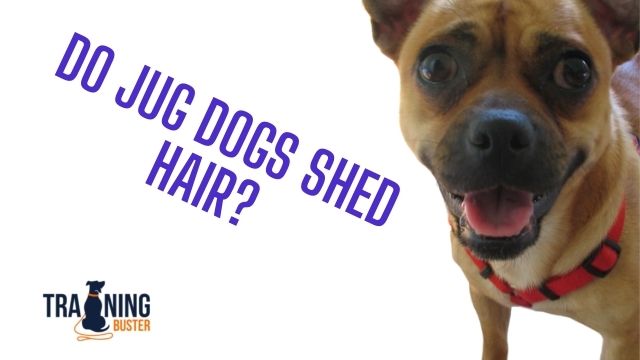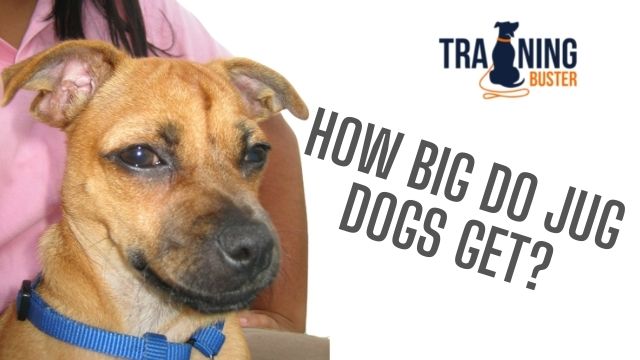
Shedding is an essential part of any dog’s overall health, however much they do it. Shedding helps your Jug get rid of dead and damaged hair, while also spreading their coat oils around. But you have to admit; dog hair can also be a real pain to clean up.
Fur somehow manages to weave its way in everywhere. Plus, shedding can trigger people’s allergies. This may mean that you can’t have some guests around, or that you even have to rehome or avoid cuddling your pooch!
So, if you’re considering adopting one, it’s worth finding out: do Jug dogs shed hair? If so, how much hair do they lose, and what should you do about it? Let’s explore this:
What kind of coat does the Jug have?
Being a cross between the Jack Russell and Pug, it’s not clear which coat your Jug will end up inheriting. There’s a chance your Jug will have the Jack Russell coat. This is a coat that’s either rough, broken, or smooth, with mainly white markings and some black and tan patches. Some Jack Russell Terriers even have longer coarse hair.
If your Jug has more of a Pug coat, they’ll have a black or fawn color, with a silver or apricot sheen. This short, smooth coat is actually a double coat, as is the Jack Russell’s. Pug fur is sleek and silky – perfect for petting!
Being double coats, both these coats will cause your Jug to lose some hair every day, especially coming up to the warmer months of the year. Coming up to summer, all dogs naturally lose much of their undercoat. This helps them to keep cool.
Do I need to brush my Jug?
Yes. Not only will your Jug adore a brush’s gentle massage, but brushing your Jug also has tons of health benefits. Brushing helps stimulate your Jug’s circulation and relaxes them too. And, of course, brushing also removes the excess hair that your Jug is trying to shed.
If your Jug has a somewhat longer coat, a basic brush with metal or nylon bristles will help get that deeper hair out without hurting them. Go for metal bristles with rubber tips.
For general everyday brushing, a rubber curry comb removes both shed hair and dry, dead skin.
If your Jug sheds excessively, your local pet store could recommend a more in-depth de-shedding tool. Shedding tools are intensive, with stainless steel tines that get right into your Jug’s undercoat. Most Jugs are unlikely to need something like this, however.
How can I manage my Jug’s shedding?
Dog fur can be a real pain to try and clean up, especially the Jug’s short hairs, which seem to weave their way into fabrics. Thankfully, there are some simple measures you can take to reduce how much you have to do this.
Though your Jug may be a real snuggle bug, restricting your Jug’s access to the couch and any other difficult-to-clean areas is one of the best ways to manage your Jug’s shedding. This may mean using gates around the home, training your Jug to stay on the floor, or moving your Jug’s own bed into the area where they spend most of their time.
You could also have a blanket that you use especially for cuddling with your Jug. Furniture covers are a great way to prevent your Jug’s hairs from getting into woven fabrics, too.
Above all, forming a regular brushing and grooming routine is the best way to keep your Jug’s excess hair at bay.
How can I boost my Jug’s fur health?
If you want your Jug to lose less hair, try looking at their overall health.
With their flat face, your Jug probably drinks from their bowl pretty often. Nevertheless, making sure your Jug stays hydrated is still key for their skin health. When dehydrated, your Jug’s hair follicles will dry out. This leads to more shedding. So, be sure to keep your Jug’s water topped up!
You should also take a look at your Jug’s diet. With a proper diet, your Jug will have stronger, more resilient hair follicles. Whereas if they have a food allergy or a poor diet, excessive shedding and bald patches may be one of the first symptoms you notice.
Jug, Pug, or Small Breed food types should be perfect for maintaining your Jug’s coat health. For treats or tidbits, some oily foods like fish may improve your Jug’s fur.
Another way to promote your Jug’s fur health is to groom and bathe them regularly. Sure, brushing your Jug every day removes a certain amount of hair. But did you know regular bathing can also help get rid of excess hair? You can even get de-shedding shampoos for better results.
Don’t bathe your Jug too often, either, though, or you will do more harm than good. Once a month should suffice for most Jugs.
When should I be worried about my Jug’s shedding?
Though your Jug’s fur loss can be annoying, it’s only natural. But, did you know that some health conditions can cause your Jug to lose too much hair? If your Jug is ill, their excessive coat loss will probably be accompanied by bald patches, scratching, or whining.
One of the most common reasons for excessive shedding is allergies or food allergies. Your Jug may be allergic to something in their surroundings, like dust, or something seasonal, like grass or pollen. Your vet can diagnose your Jug’s allergy and prescribe an anti-allergy shampoo or medication.
Other conditions that cause excessive shedding are parasite infestations like fleas, mites, or lice. If this happens, you will notice the parasites on your Jug’s bedding and on their skin. All soft furnishings your Jug spends any great amount of time around will need to be washed, and your Jug will need to be treated with an anti-parasitic shampoo.
Other health problems resulting in extreme coat loss include thyroid issues, liver conditions, and kidney disease. So, always take your Jug to the vet if you are worried.
One last concern, especially among thin-coated Jugs, is sunburn. If you plan on taking your Jug outdoors in the sun for any long period of time, you should always apply a dog-friendly sunscreen.


